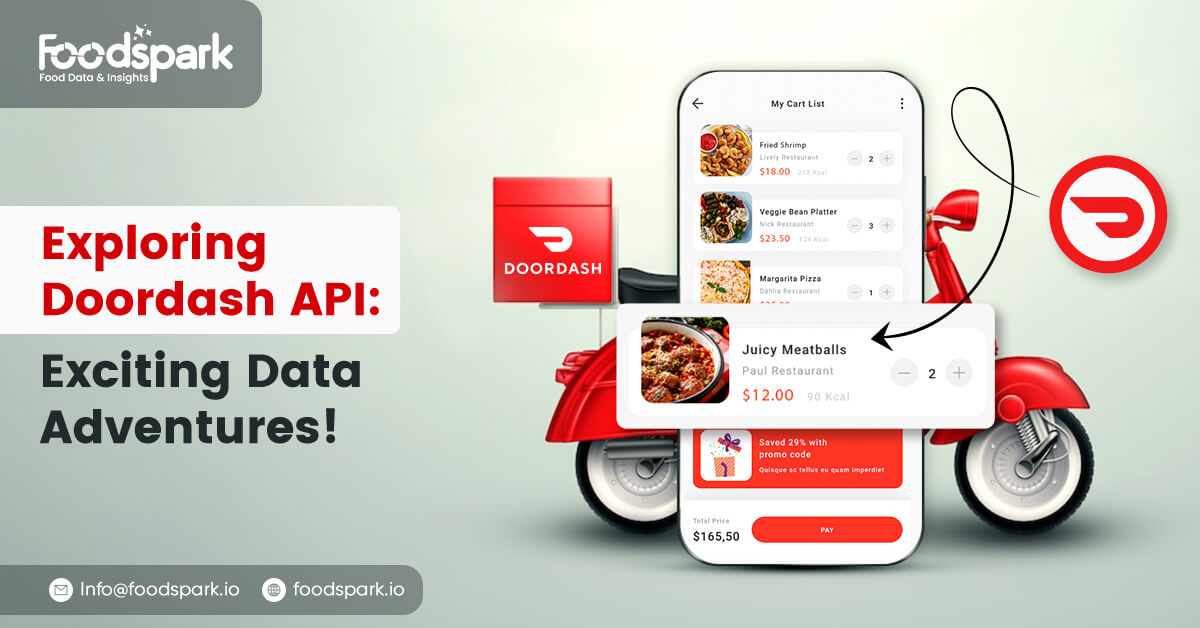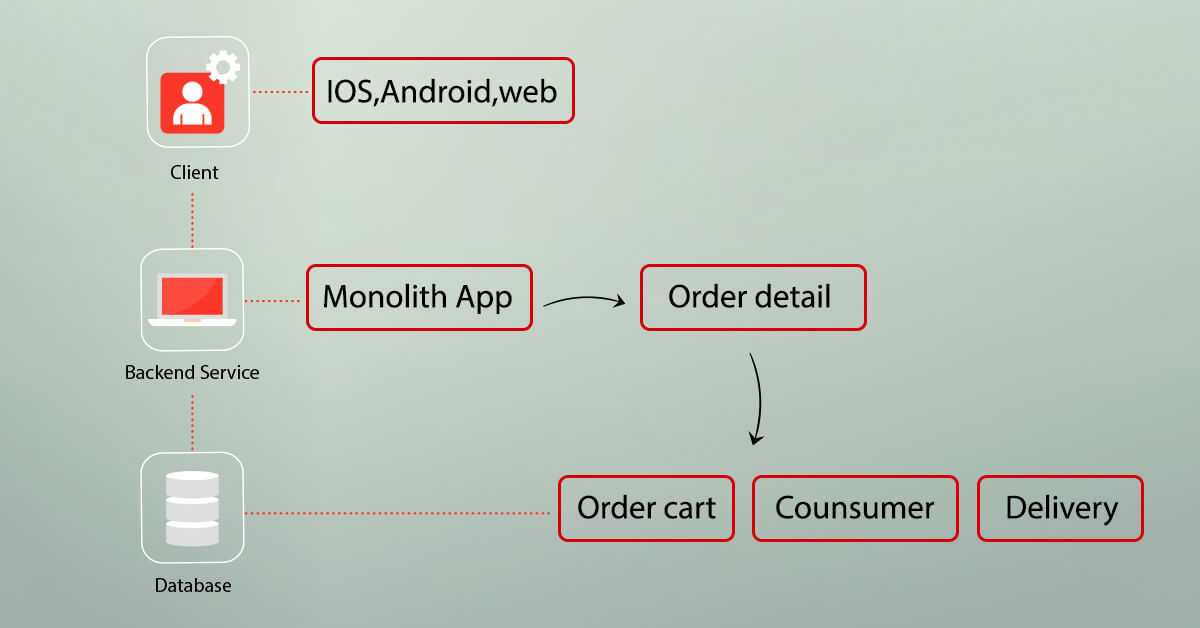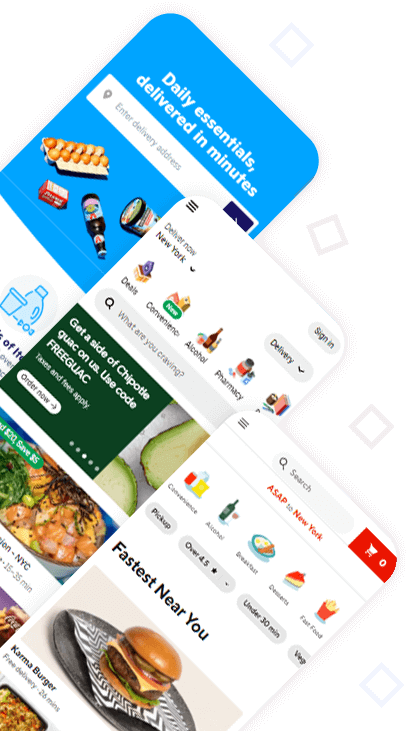Exploring Doordash API: Exciting Data Adventures!

Have you ever been so hungry and wished that you could get your favorite meal delivered right to your doorstep? Well, technology has made that possible, and one of the companies behind it is Doordash! They have created a tool called Doordash API that helps us order food without leaving the comfort of our homes. In this blog, we’re going on a journey to explore the world of Doordash API and learn about some fascinating things like data, scraping, extracting, and how they all work together. Let’s dive in!
A Brief About Doordash
Doordash is a company that connects hungry people like us with some of the best restaurants in the neighborhood. They have an app that lets people order food online. So now the question is – How Does Doordash Help Us Order Food? Picture this: you’re at home, hungry, and craving a pizza or a juicy burger. Instead of getting in the car and driving to the restaurant, you can open the Doordash app on your phone or computer to browse restaurants in your area, choose your favorite dishes, and place an order with just a few taps. It’s like having a virtual food court right at your fingertips! But have you ever wondered how the Doordash app knows which restaurants are available and what they have on their menus? That’s where the Doordash API comes into play.
Data Scraping, and Extracting: Unveiling the Secrets of APIs
Now, let’s dive into the domains of data, scraping, and extracting. Data means information like names of restaurants, locations, the dishes they offer, and even customer reviews. But where does this data come from?
Through “scraping,” which means gathering data from different sources, like websites or apps. It is extracting the information we need just with a few clicks. In the case of Doordash, their API scrapes data from their system, including details about restaurants, menus, and much more.
Once the data is scraped, it needs to be “extracted” and organized so that it can be easily comprehended and utilized by developers. Extracting data means sorting it out, ensuring it’s in the proper format, and categorizing it This way, it becomes much easier to operate with and exhibit in apps or websites.
Bringing It All Together: How Doordash API Works

What is Doordash API? Now, you might be wondering, what is an API? Well, API means Application Programming Interface. It allows different apps and websites to connect and share information. Doordash has its very own API, which enables other developers to access their data and use it in their apps or websites.
Types of Doordash API Data Sets
When we talk about data sets, we mean different kinds of information that Doordash’s API offers. Below are a few examples:
Restaurants:
The API can give us an inventory of all the restaurants available on Doordash. It contains details like their names, locations, menus, and even customer reviews. We can utilize this knowledge to find our favorite restaurants or discover new ones.
Menus:
With the support of Doordash API, we can access the menus of different restaurants. We can find out what dishes they offer, the prices, and even dietary details. It’s like having a virtual menu.
Delivery Status:
The API can also inform us about the status of our food delivery. We can find out when the food has been picked up from the restaurant and when it will arrive at our doorstep.
Now that we understand the basics of data, scraping, and extracting, let’s see how it all comes together with Doordash API. When a developer wants to build an app or a website that presents food delivery or restaurant information, they can use the Doordash API to access the data they need. For example, if a developer wants to build a restaurant discovery app. They can use the Doordash API to scrape and extract data regarding different restaurants in a particular area. This data contains the restaurant’s name, location, menu items, prices, and even customer reviews. The developer can then organize this information in their app, making it easy for hungry people like us to find the perfect place to order from.
Applications of Doordash API
Now that we know about the different data sets, let’s discuss how people can use Doordash’s API to create amazing things. Here are a few examples:
Restaurant Discovery Apps:
Developers can use the API to design apps that assist people discover restaurants based on their location, cuisine choices, or even dietary limitations. It’s like having a personal food guide!
Food Delivery Tracking:
Have you ever ordered food and wondered when it will arrive? Well, developers can use the API to create apps that monitor the delivery status in real time. You can check the food’s journey from the restaurant to your home!
Menu Recommendation Apps:
Leveraging the menu data from Doordash’s API, developers can create apps that recommend delicious dishes based on your preferences. Somewhat similar to having a personal chef who knows precisely what you like to eat!
Conclusion
It is a fascinating world of Doordash Data API, the different types of data set it offers, and the fantastic applications people can create using this data. Next time you order your favorite meals and track deliveries through apps, remember this fascinating realm of data, scraping, and extraction, powered by the Doordash API.
Explore Our Latest Insights
How Food Data Scraping Fuels Growth in B2B Marketplaces for the Food Industry
January 21, 2025 B2B marketplaces use data collection to expand and maintain relevance in the food industry. Organizations can improve...
Read moreQuick Commerce Data APIs: Understanding Instamart API, Zepto API, Blinkit API
January 2, 2025 Web scraping has now become an important strategy in the accelerating world of e-commerce, especially for businesses...
Read more
